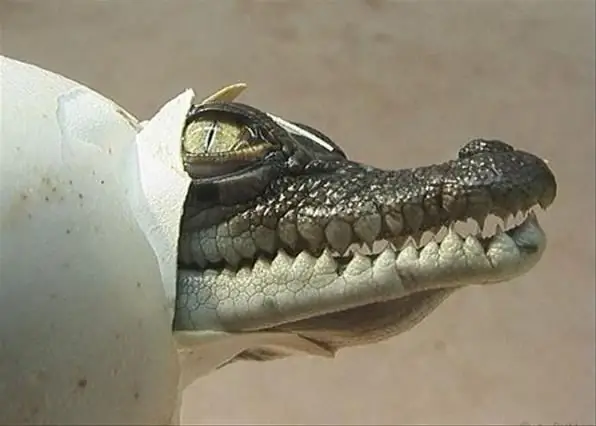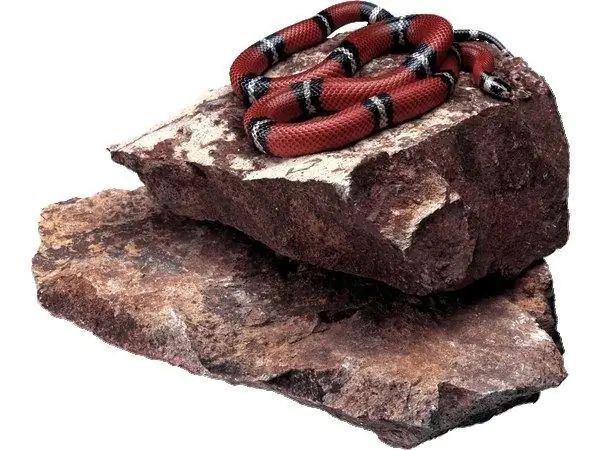- Author Delia Mathews [email protected].
- Public 2023-12-16 00:05.
- Last modified 2025-01-22 15:45.
According to scientists, the closest living relatives of crocodiles, which appeared 250 million years ago, are birds. It's hard to believe, but if you know how these dangerous predators breed, a lot becomes clear.

Green and dangerous: how crocodiles live

Crocodiles are now common in almost all tropical countries. These reptiles prefer to live in fresh water bodies. Some species of crocodiles are also known, for example, the Nile and African narrow-necked, which may well live on the sea coast, that is, they are not afraid of salt water. According to scientists, in ancient times, crocodiles generally lived mainly on land, only later they gradually moved on to aquatic life. Now they can spend most of the day in the water, only sometimes getting out on land to bask in the sun.
Breeding features

Female crocodiles reproduce by laying 20 to 100 eggs in the sand. Usually the clutch is hidden in the shallows, sometimes the eggs are buried in a kind of nest, created with the help of liquid mud and rotting leaves. How many eggs are in a clutch depends on the size and type of individual.
Currently, almost all crocodiles prefer to live in water or near water bodies, however, completely land animals belonging to the Mesosuchia group lived in South America.
If a female crocodile has chosen a shady place for laying, she will not dig a hole very deeply, whereas in sunny areas she can dig about 50 centimeters. Having covered the eggs with earth mixed with grass and foliage, the females, as a rule, do not move far from their clutch and guard their future cubs.
According to scientists, all crocodile eggs usually hatch at one moment, and the temperature conditions of the incubation period affect the sex of the offspring. For example, when a crocodile egg is stored at a temperature of 31-32 ° C, a male will hatch from it, if the level was lower or higher, females will be born.
Scientists managed to record on video that some individuals of this species of reptiles are even able to climb trees growing next to the river where they live.
Caring for offspring
Interestingly, small crocodiles begin to make their first characteristic croaking sounds while still inside the egg. Mother crocodiles, having heard this signal, immediately begin to dig out the clutch to help their cubs get out. Then the female tries to transfer the crocodiles into the water, gently taking them into her mouth - despite the many sharp teeth, this process is quite safe for babies, since the mother has baroreceptors in her mouth. Thanks to them, the female can feel well what is happening in her oral cavity.
According to the testimony of zoologists who study the reproduction of crocodiles, females, transferring their young to the water, more than once picked up and also carried away into the water and accidentally caught small turtles. As you know, some species of turtles tend to lay eggs near crocodile clutches to ensure the safety of future offspring.






